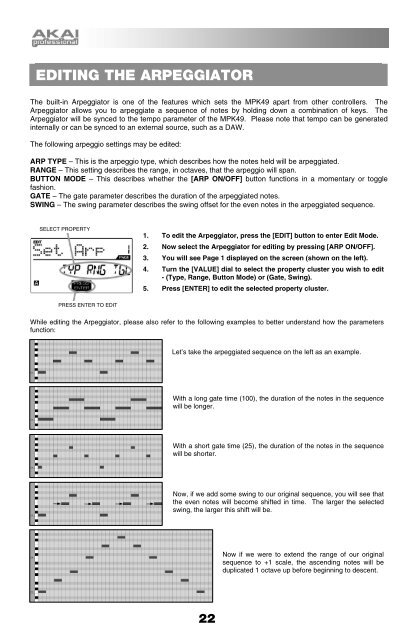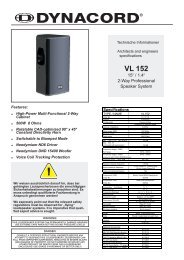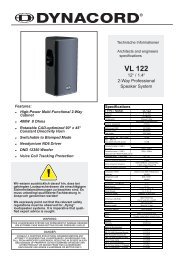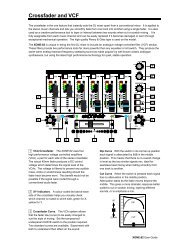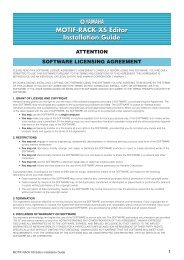MPK49 Operator's Manual - rev1.1 - Just Music
MPK49 Operator's Manual - rev1.1 - Just Music
MPK49 Operator's Manual - rev1.1 - Just Music
You also want an ePaper? Increase the reach of your titles
YUMPU automatically turns print PDFs into web optimized ePapers that Google loves.
EDITING THE ARPEGGIATORThe built-in Arpeggiator is one of the features which sets the <strong>MPK49</strong> apart from other controllers. TheArpeggiator allows you to arpeggiate a sequence of notes by holding down a combination of keys. TheArpeggiator will be synced to the tempo parameter of the <strong>MPK49</strong>. Please note that tempo can be generatedinternally or can be synced to an external source, such as a DAW.The following arpeggio settings may be edited:ARP TYPE – This is the arpeggio type, which describes how the notes held will be arpeggiated.RANGE – This setting describes the range, in octaves, that the arpeggio will span.BUTTON MODE – This describes whether the [ARP ON/OFF] button functions in a momentary or togglefashion.GATE – The gate parameter describes the duration of the arpeggiated notes.SWING – The swing parameter describes the swing offset for the even notes in the arpeggiated sequence.SELECT PROPERTY1. To edit the Arpeggiator, press the [EDIT] button to enter Edit Mode.2. Now select the Arpeggiator for editing by pressing [ARP ON/OFF].3. You will see Page 1 displayed on the screen (shown on the left).4. Turn the [VALUE] dial to select the property cluster you wish to edit- (Type, Range, Button Mode) or (Gate, Swing).5. Press [ENTER] to edit the selected property cluster.PRESS ENTER TO EDITWhile editing the Arpeggiator, please also refer to the following examples to better understand how the parametersfunction:Let’s take the arpeggiated sequence on the left as an example.With a long gate time (100), the duration of the notes in the sequencewill be longer.With a short gate time (25), the duration of the notes in the sequencewill be shorter.Now, if we add some swing to our original sequence, you will see thatthe even notes will become shifted in time. The larger the selectedswing, the larger this shift will be.Now if we were to extend the range of our originalsequence to +1 scale, the ascending notes will beduplicated 1 octave up before beginning to descent.22


